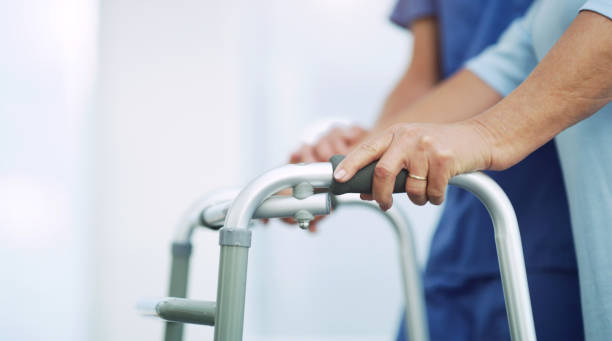In the realm of healthcare, mobility restoration stands as a critical goal, often achieved through various treatment methodologies. This blog post is dedicated to shedding light on the diverse forms of treatments utilized to help individuals regain their mobility. Whether you’re a healthcare professional seeking to expand your knowledge or someone dealing with mobility issues, this post is designed to provide you with a comprehensive view of the strategies and treatments available today, along with their benefits and potential drawbacks. So, read on to discover more about the fascinating field of mobility restoration.
Contents
- 1 Exploring the Different Strategies for Mobility Restoration
- 2 The Role of Assistive Technology in Mobility Restoration
- 3 The Impact of Lifestyle Modifications on Mobility Restoration
- 4 Complementary Therapies for Mobility Restoration
- 5 The Future of Mobility Restoration: Promising Innovations and Research
- 6 Conclusion
Exploring the Different Strategies for Mobility Restoration
One of the most common strategies for mobility restoration is physical therapy. This involves a series of exercises designed to strengthen muscles and improve flexibility and balance. Physical therapists develop individualized treatment plans that target specific areas of weakness in the body. This form of treatment has been shown to be effective in a wide range of cases, from minor injuries to recovery from major surgeries.
Another strategy is occupational therapy, which focuses on improving a person’s ability to perform daily activities. This could include activities like dressing, cooking, and bathing. For individuals with mobility issues, occupational therapists might suggest assistive devices or adaptive techniques to help improve quality of life. Unlike physical therapy, which primarily focuses on the body’s physical functioning, occupational therapy takes a more holistic approach, considering both the physical and mental aspects of a person’s health.
Surgical interventions may also be used to restore mobility, particularly in cases where conservative treatments like physical or occupational therapy have not produced the desired results. For instance, joint replacement surgeries, such as knee or hip replacements, can significantly improve mobility in individuals suffering from severe arthritis. While this approach can provide substantial relief, it comes with its own set of risks and considerations, including a potentially long recovery period and the need for post-surgical rehabilitation.
The Role of Assistive Technology in Mobility Restoration
Assistive technology, another vital player in mobility restoration, has been increasingly adopted to help individuals overcome their mobility limitations. This broad category includes various tools and devices, such as wheelchairs, walkers, canes, scooters, and even high-tech options like powered exoskeletons and prosthetic limbs.
These are specially designed to compensate for specific limitations, allowing individuals to move more freely and independently. While assistive technology can greatly enhance mobility, it’s important to note that its effectiveness often depends on the user’s adaptability and the device’s suitability to their specific needs and environments.
The Impact of Lifestyle Modifications on Mobility Restoration
Lifestyle modifications play an influential role in mobility restoration. Adopting a healthier way of living can contribute significantly to improving mobility and maintaining general health. Elements of a healthy lifestyle that positively affect mobility include regular exercise, maintaining a healthy weight, a balanced diet, and the avoidance of detrimental habits like smoking and excessive alcohol consumption.
In addition to medical treatments and therapies, healthcare professionals often recommend lifestyle changes as a part of the comprehensive plan for mobility restoration. These changes not only aid in improving mobility but also help prevent future mobility issues and improve overall quality of life.
Complementary Therapies for Mobility Restoration

Apart from conventional treatments, complementary therapies have gained recognition for their role in mobility restoration. These therapies, including massage, acupuncture, and yoga, aim to relieve pain, enhance muscular strength, and improve flexibility and balance. For instance, massage therapy can alleviate muscle tension and stiffness, thereby promoting better mobility.
Similarly, acupuncture can help in managing pain that restricts mobility. Yoga, with its varied poses and stretches, can enhance flexibility and balance, key components of mobility. While these therapies can be helpful, it’s essential to remember that their effectiveness varies from person to person. Always consult a healthcare professional before starting a new complementary therapy.
The Future of Mobility Restoration: Promising Innovations and Research
As with many fields of medicine, the landscape of mobility restoration continues to evolve with the advancements in science and technology. Groundbreaking research and innovations are paving the way for even more effective strategies to restore mobility. From the development of advanced prosthetics that mimic natural movement to the use of stem cell therapies for tissue regeneration, the future of mobility restoration holds much promise.
Additionally, the integration of virtual reality in rehabilitation therapies provides immersive and personalized treatment, further enhancing its effectiveness. However, it’s important to note that these budding technologies and treatments are still in their early stages, and more research is needed to assess their long-term benefits and implications. As we move forward, the focus remains on developing treatments that not only restore mobility but also improve the quality of life for individuals dealing with mobility issues.
Conclusion
Restoring mobility is a multifaceted endeavor, encompassing a variety of strategies from physical and occupational therapies to surgical interventions, assistive technologies, and lifestyle modifications. Complementary therapies and innovative research are also contributing to this field, offering promising alternatives and advancements. While the journey to mobility restoration can be challenging and complex, these comprehensive approaches aim to not only improve physical functioning but also enhance the overall quality of life.
